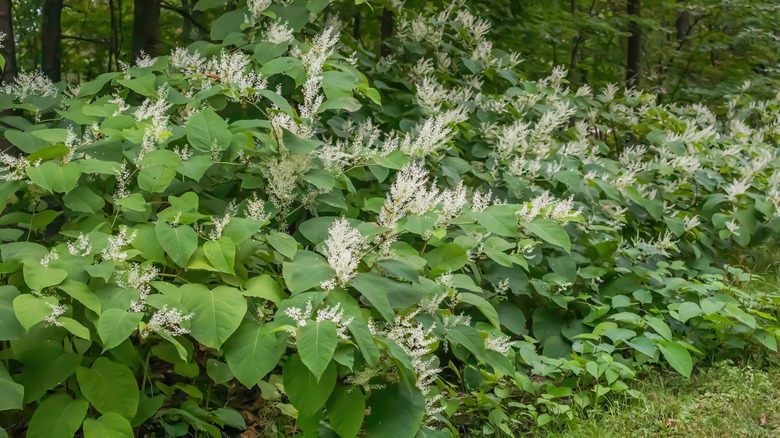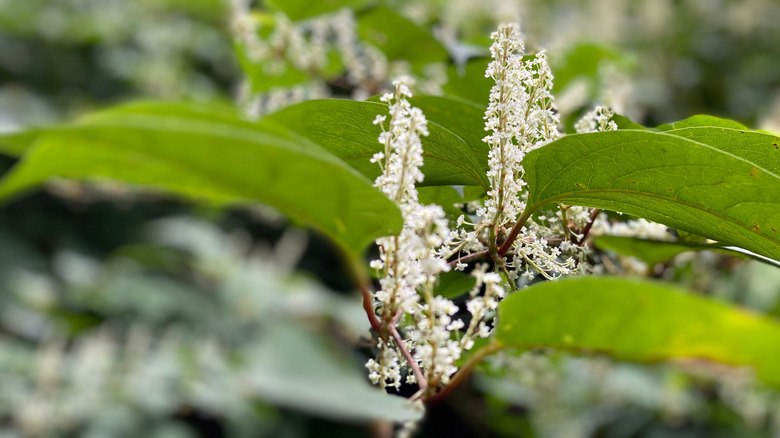The Japanese Knotweed Disposal Mistake That Just Makes The Problem Worse (& What To Do Instead)
Of all the invasive weeds you can find growing in your yard, Japanese knotweed (Fallopia japonica) is one of the most dreaded. It can even tank your home's value before you sell your house. Not only is knotweed a perennial, but it also spreads by rhizomes as well as by seeds. Even a small section of root has the potential to grow a whole new plant; this is what makes it so difficult to deal with and is why it's so easy to accidentally make the problem worse.
While some weeds can just get tossed into your compost bin with no problem, unfortunately, that's not the case with Japanese knotweed. Instead, it is one of the common weeds you should think twice before adding to your compost pile. It's likely that your compost won't get nearly hot enough to fully kill all the root segments, so you'll just end up spreading Japanese knotweed throughout your garden. In fact, the plant is so persistent that if you throw out Japanese knotweed roots or stems, you should make sure to use sturdy black contractor bags and tie them shut, instead of just tossing them in your kitchen garbage bags.
It may sound like this stubborn weed is impossible to eradicate, but while it is a challenge, there are effective methods for killing Japanese knotweed. While you may be able to dig up and carefully dispose of small patches of knotweed, diligent and careful use of herbicides is often the better option for larger patches.
Dealing with and disposing of Japanese knotweed
If you've caught the problem early and you're only dealing with a very small patch of Japanese knotweed, you may be able to avoid herbicides and simply dig up the knotweed. Make sure you get all the root segments and bag them appropriately in black contractor bags before discarding them. You'll also need to continue checking the area regularly to be able to quickly notice and control any regrowth that may happen, or areas you may have missed.
Unfortunately, most patches of Japanese knotweed are too large and well-established to be managed solely by digging them up. Instead, you may need to use an herbicide. One popular strategy is to cut down the knotweed, bag it appropriately, and then use a glyphosate-containing herbicide on the stems. Make sure to use caution and follow all instructions on the bottle when using herbicides. Much like with mechanical methods like digging, you'll still need to check the area regularly, and may need to apply additional herbicide treatments before your knotweed problem is truly solved.

